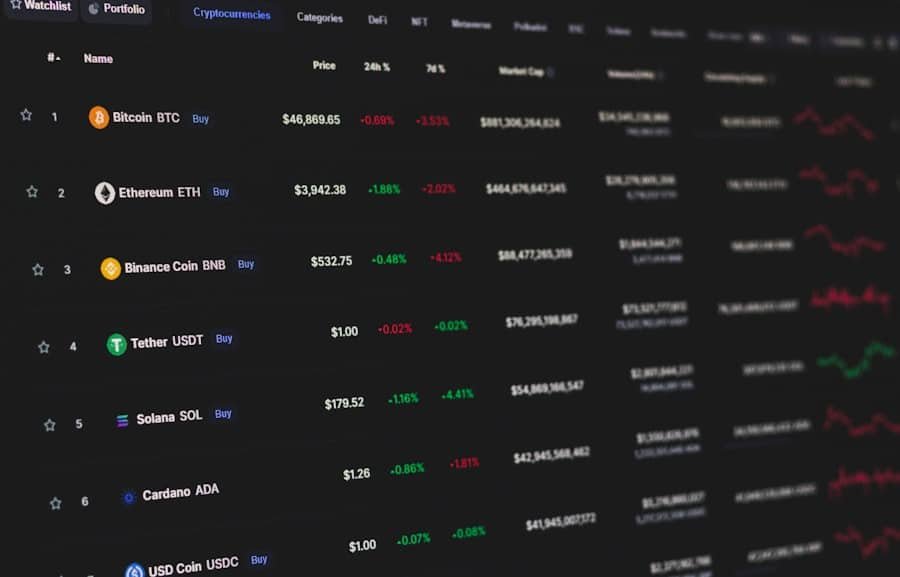Market making is a fundamental component of the financial ecosystem, serving as a bridge between buyers and sellers in various markets. At its core, market making involves providing liquidity by continuously quoting buy and sell prices for financial instruments, thereby facilitating smoother transactions. This strategy is not merely about executing trades; it encompasses a sophisticated understanding of market dynamics, risk management, and the ability to respond swiftly to changing conditions.
As financial markets evolve, the role of market makers has become increasingly complex, requiring a blend of technological prowess and market insight. The significance of market making extends beyond mere liquidity provision. It plays a crucial role in price discovery, ensuring that prices reflect the underlying value of assets.
By maintaining an orderly market, market makers help to reduce volatility and enhance the overall efficiency of trading. In an era characterised by rapid technological advancements and algorithmic trading, understanding the intricacies of market making strategies is essential for both institutional investors and retail traders alike. This article delves into the multifaceted world of market making, exploring its mechanisms, strategies, and implications for various financial instruments.
Summary
- Market making is a crucial strategy in financial markets that involves providing liquidity and facilitating trading activities.
- Market makers play a key role in maintaining orderly and efficient markets by quoting bid and ask prices for financial instruments.
- Understanding the basics of market making involves managing inventory, monitoring market conditions, and adjusting quotes to manage risk.
- Types of market making strategies include traditional market making, electronic market making, and high-frequency trading.
- While market making offers advantages such as earning bid-ask spreads, it also comes with disadvantages such as exposure to market risk and potential losses.
The Role of Market Makers in Financial Markets
The Dual Role of Market Makers
This dual role not only ensures that there is always a counterparty available for trades but also helps to stabilise prices by absorbing excess supply or demand.
Maintaining Market Efficiency
For instance, during periods of heightened volatility or uncertainty, market makers can step in to provide liquidity when other participants may be hesitant to trade, thus preventing drastic price swings. Moreover, market makers contribute significantly to the efficiency of the markets. By narrowing the bid-ask spread—the difference between the buying and selling price—they enhance the overall trading experience for investors. A tighter spread indicates lower transaction costs for traders, which can encourage more trading activity.
Dynamic Interaction and Risk Management
Additionally, market makers often employ sophisticated algorithms to analyse market data and adjust their quotes in real-time, ensuring that they remain competitive while managing their risk exposure effectively. This dynamic interaction between supply and demand is essential for maintaining a healthy market environment.
Understanding the Basics of Market Making

To grasp the fundamentals of market making, one must first understand the mechanics behind it. Market makers typically hold an inventory of securities, which allows them to fulfil buy and sell orders promptly. When a trader wishes to buy a security, the market maker sells from their inventory; conversely, when a trader wants to sell, the market maker buys the security back.
This process creates a continuous flow of transactions that keeps the market active. The profitability of market making hinges on the bid-ask spread. Market makers earn a profit by buying at a lower price (the bid) and selling at a higher price (the ask).
However, this strategy is not without risks. Market makers must manage their inventory carefully to avoid significant losses due to adverse price movements. They often employ hedging techniques to mitigate these risks, such as using derivatives or diversifying their holdings across different securities.
Understanding these basic principles is crucial for anyone looking to engage in or comprehend market making strategies.
Types of Market Making Strategies
Market making strategies can vary widely depending on the specific goals of the market maker and the characteristics of the instruments being traded. One common approach is passive market making, where the market maker places limit orders at predetermined prices rather than actively seeking out trades. This strategy allows them to capture the bid-ask spread while minimising exposure to sudden price changes.
Passive market makers often rely on historical data and technical analysis to set their prices. On the other hand, active market making involves more aggressive tactics, where the market maker continuously adjusts their quotes based on real-time market conditions. This strategy requires a deep understanding of market trends and participant behaviour.
Active market makers may use sophisticated algorithms that analyse vast amounts of data to identify patterns and predict price movements. Additionally, some market makers specialise in specific asset classes or sectors, tailoring their strategies to exploit unique opportunities within those markets.
Advantages and Disadvantages of Market Making
The advantages of market making are manifold. One of the primary benefits is the provision of liquidity, which is essential for efficient market functioning. By ensuring that there are always buyers and sellers available, market makers help to reduce transaction costs and enhance price stability.
Furthermore, they can profit from the bid-ask spread while also benefiting from favourable price movements in their inventory. However, there are notable disadvantages associated with market making as well. The inherent risks involved can lead to significant losses if not managed properly.
For instance, during periods of extreme volatility or unexpected news events, market makers may find themselves holding positions that rapidly decline in value. Additionally, competition among market makers can drive down spreads, reducing profitability over time. The reliance on technology also introduces operational risks; system failures or glitches can disrupt trading activities and lead to substantial financial repercussions.
Factors to Consider When Implementing a Market Making Strategy

Technology and Infrastructure
First and foremost is the choice of technology and infrastructure. Given the fast-paced nature of modern trading environments, having robust systems in place is essential for executing trades efficiently and managing risk effectively.
Regulatory Compliance
Another important consideration is regulatory compliance. Market makers operate within a framework of rules and regulations designed to ensure fair trading practices and protect investors. Understanding these regulations is crucial for avoiding potential legal pitfalls that could arise from non-compliance.
Risk Management
Additionally, market makers must assess their risk tolerance and develop appropriate risk management strategies tailored to their specific trading environment and asset classes. High-frequency trading platforms equipped with advanced algorithms can provide a competitive edge by enabling rapid decision-making based on real-time data.
Market Making in Different Financial Instruments
Market making strategies can be applied across various financial instruments, each with its unique characteristics and challenges. In equities markets, for instance, market makers play a vital role in facilitating trading in stocks by providing liquidity during both regular trading hours and after-hours sessions. The dynamics in equity markets often involve significant volumes and volatility, necessitating agile strategies that can adapt to changing conditions.
In contrast, fixed income markets present different challenges for market makers due to their typically lower liquidity compared to equities. Here, market makers must navigate a more complex landscape involving various maturities and credit qualities. The use of sophisticated models to assess interest rate risk becomes paramount in this context.
Similarly, in foreign exchange markets, where currency pairs are traded around the clock, market makers must contend with global economic factors that influence exchange rates while managing their exposure across multiple currencies.
The Future of Market Making Strategy
As financial markets continue to evolve with advancements in technology and changing regulatory landscapes, the future of market making strategies is likely to undergo significant transformation. The rise of artificial intelligence and machine learning is poised to revolutionise how market makers operate by enabling more sophisticated predictive analytics and automated trading strategies. These technologies can enhance decision-making processes by analysing vast datasets far beyond human capability.
Moreover, as decentralised finance (DeFi) gains traction, traditional market making may face new challenges and opportunities. The emergence of blockchain technology has introduced novel trading venues that operate outside conventional frameworks, potentially disrupting established practices in liquidity provision. Market makers will need to adapt their strategies to navigate this rapidly changing environment while continuing to fulfil their essential role in ensuring efficient markets.
In conclusion, understanding the intricacies of market making strategies is vital for anyone involved in financial markets today. As these strategies evolve alongside technological advancements and shifting regulatory landscapes, staying informed about best practices will be crucial for success in this dynamic field.
A market making strategy is essential for ensuring liquidity and efficiency in financial markets. It involves continuously buying and selling securities to provide a two-sided market for investors. To run a successful market making strategy, it is crucial to understand the dynamics of supply and demand in the market. A related article on how to run the best successful product review process in 2020 provides valuable insights into understanding customer preferences and market trends, which can be applied to developing a successful market making strategy. Source
FAQs
What is a market making strategy?
A market making strategy is a trading strategy where a trader simultaneously provides liquidity to a specific financial market by placing both buy and sell orders for a particular asset. The goal of market making is to profit from the spread between the buy and sell prices, while also helping to ensure that there is liquidity in the market.
How does a market making strategy work?
In a market making strategy, a trader continuously places buy and sell orders for a specific asset, with the intention of profiting from the spread between the bid and ask prices. By providing liquidity to the market, the market maker helps to ensure that there are always buyers and sellers for the asset, which can help to stabilise the market.
What are the benefits of a market making strategy?
Market making strategies can provide several benefits, including earning profits from the bid-ask spread, helping to maintain liquidity in the market, and potentially reducing price volatility for the asset being traded. Market making can also lead to more efficient price discovery and improved market efficiency.
What are the risks of a market making strategy?
Market making strategies come with certain risks, including the potential for losses if the bid-ask spread narrows, increased exposure to market volatility, and the risk of being unable to quickly adjust to changing market conditions. Additionally, market makers may face regulatory and compliance risks.
Who uses market making strategies?
Market making strategies are commonly used by professional traders, financial institutions, and brokerage firms. Market makers play a crucial role in ensuring that financial markets are liquid and efficient, and they are often active in markets for stocks, bonds, options, and other financial instruments.
